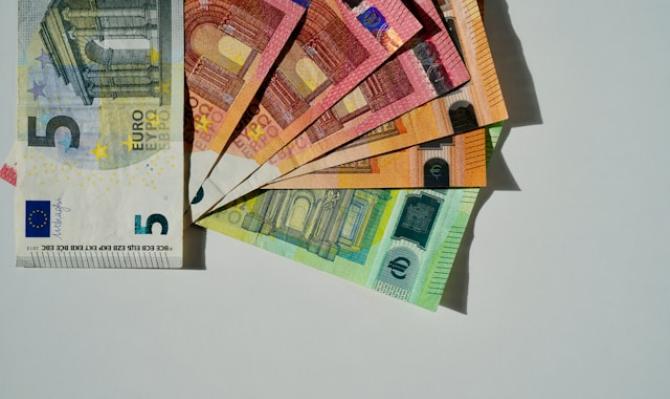Capital investment in Spain: comparison versus the euro area
In this first article in a series of two, we review the recent trends in capital investment in Spain and make a comparison with the rest of the euro area. In a second article in this same Monthly Report, we investigate the incentives for investing, based on an analysis of the evolution of profitability and the cost of financing, sector by sector.

Investment in Spain is struggling to take off. After the COVID-19 pandemic, the 2022 energy crisis and in a context of strong economic growth, investment is still below pre-COVID levels. To the extent that an economy’s medium-term growth capacity is determined by the increase in the stock of capital, the recent weakness shown by investment deserves to be analysed.
In this first article in a series of two, we review the recent trends in capital investment in Spain and make a comparison with the rest of the euro area. In a second article in this same Monthly Report, we investigate the incentives for investing, based on an analysis of the evolution of profitability and the cost of financing, sector by sector.
Recent trends in investment in Spain
The first chart shows the change in GDP and its components between the pre-pandemic period (Q4 2019) and Q2 2024. As can be seen, investment1 is the component that shows the worst performance: in Q2 2024, all components of GDP are above their values of Q4 2019, except for investment, which lies 1.3% below.
- 1Understood as gross fixed capital formation, which therefore excludes the accumulation of inventories.

If we focus on the breakdown of investment, we see significant variation between its components. For instance, whereas investment in non-residential construction or in intangible assets are well above their pre-pandemic values, investment in transport equipment or in residential construction remain well below those levels (15.1% and 7.3% below, respectively).
In this article, we will focus on the analysis of investment in capital goods, which is broken down into investment in transportation equipment and investment in other capital goods. We exclude from the analysis investment in construction, because investment in residential construction presents its own dynamics linked to the real estate market which are not the subject of analysis in this study, and also investment in intangible assets, the analysis of which also deserves a separate chapter.
Comparison versus the euro area
To assess the weakness of capital investment, it is useful to compare the pattern of behaviour vis-à-vis our main trading partners in the euro area. To this end, we compared average investment in 2023 against the pre-pandemic level of 2019.2 The second chart shows the data for total investment in capital goods.
- 2We focus on the average figure for 2023, given that no data for the euro area as a whole are available yet for Q2 2024 and focusing on data for one quarter only (Q1 2024) would be inappropriate due to the inherently volatile nature of quarterly data.

As we pointed out earlier, capital investment in Spain has shown weak performance, even compared to the euro area. However, if we break down investment in capital goods into two components – investment in transport goods and investment in other capital goods – we see very different dynamics.
In the third chart we can see that, while investment in other capital goods is far from the euro area average, it does show a similar pattern of behaviour to that of other major European economies such as Germany or France. In contrast, we also see that the area in which investment in Spain falls short of other European economies is that of transport equipment. While investment in this category in 2023 on average stood 5.6% below the 2019 level in the euro area, in Spain it was 25.1% below.

A sector-level perspective
In order to improve our understanding of the dynamics shown by investment, we delved into the detail by sector in Spain. Unfortunately, the available data on investment by type of asset and sector only reaches up until 2021, for now. However, the 2021 data already offer some interesting results.3
The fourth chart shows the gap in the investment effort in other capital goods for each sector of the Spanish economy relative to the investment effort of each sector in the euro area average. We define investment effort as the ratio of investment to gross value added (GVA). The chart presents this gap in 2021 on the vertical axis and the gap in the average for the 2015-2019 period on the horizontal axis. If a sector is located directly along the black diagonal line, it means that the gap has remained unchanged between the two periods analysed. Points located above the line indicate that the sector has improved its investment effort with respect to the euro area average in 2021 versus the period 2015-2019, and vice versa in the case of points located below the line.
- 3In qualitative terms, the results of the previous section remain unchanged if we focus on comparing the average for 2021 with that of 2019.

As can be seen, the gap in investment effort in other capital goods has improved for most sectors in 2021 compared to the 2015-2019 average. The main exception is the information and telecommunications sector, which presented a positive gap of around 3 pps in 2015-2019 but a negative gap of around 2 pps in 2021.
In contrast, when we look at the investment effort in transport equipment (see fifth chart), we see that the gap in 2021 had slightly deteriorated for most sectors, resulting in many sectors showing negative gaps. In addition, there are three cases that stand out: the transport and storage sector itself, which shows a very marked deterioration in its positive gap (of –5.5 pps); the retail and wholesale trade sector, which also shows
a substantial deterioration of the gap, albeit not quite as pronounced (–0.7 pps); and the administrative and auxiliary activities sector, which shows a significant improvement in its gap (+4.2 pps) and has thus gone from a negative gap in 2015-2019 to a positive one in 2021.

It should be borne in mind that these three sectors are the most important in investment in transport equipment in Spain: combined they account for around 77% of all investment in transport equipment, with a very even weighting among them. Thus, we see that the investment effort in transport equipment has deteriorated slightly in the economy as a whole, and that the deterioration has been particularly pronounced in two of the three main sectors that invest the most in transport equipment, while there has been a substantial improvement in the other major sector.
Unfortunately, the national accounting data only provide information on investment in transport equipment at the first-digit level in the National Classification of Economic Activities (CNAE) codes, but not at the two-digit level of detail. Therefore, it is not possible for us to investigate the investment effort dynamics within the sectors mentioned above: transport and storage, retail and wholesale trade, and administrative and auxiliary activities.
Conclusions
Capital investment in Spain has shown a rather weak performance in recent years. However, if we differentiate between investment in transport equipment and in other capital goods, we see that, with respect to the euro area, it is investment in transport goods that falls short. In contrast, the dynamics of investment in other capital goods show a more similar pattern to the other major European economies.
When we look at the detail by individual sector, we observe a weak performance of investment in transport equipment across the various sectors of our economy. Nevertheless, the deterioration in the investment effort is especially pronounced in two sectors in particular – transport and storage, and retail and wholesale trade.
Beyond the special case of investment in transport equipment, the weak tone shown by capital investment as a whole may be in response to a decrease in companies’ profitability in recent years, due to the shocks which our economy has endured, and/or the increase in the cost of financing associated with the tightening of monetary policy since mid-June 2022. Our second article devoted to investment in this report inquires into this issue.
